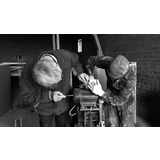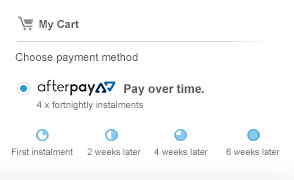Every year, almost 1,000 Australians experience chainsaw-related injuries, with many of these incidents stemming from worn or faulty equipment. Whether you're clearing scrub on your property, managing eucalyptus trees, or maintaining your rural block, knowing when to replace your chainsaw bar could be the difference between a productive day and a trip to the emergency room.
Understanding worn chainsaw bar symptoms isn't rocket science, but it's crucial knowledge for anyone who regularly uses a chainsaw. Let's dive into the telltale signs that your bar has seen better days and explore how often to replace your chainsaw bar for optimal performance and safety.
Do Chainsaw Bars Wear Out? The Reality Check
Absolutely, chainsaw bars do wear out—it's not a matter of if, but when. In Australia's harsh conditions, from the dusty Outback to coastal humidity, chainsaw bars face unique challenges that can accelerate wear. Red dirt, salty air, and our native hardwoods like ironbark and red gum are particularly tough on equipment.
How Long Does a Chainsaw Bar Last?
How long a chainsaw bar lasts depends on several factors:
- Usage frequency: Weekend warriors might get 2-3 years, while professional arborists may need replacements every 6-12 months
- Cutting material: Australian hardwoods wear bars faster than pine
- Maintenance routine: Proper oiling and cleaning can double bar life
- Operating conditions: Dusty, dirty environments accelerate wear
On average, recreational users can expect 1-2 years of life, while heavy commercial use might require annual replacement.
How to Tell if Your Chainsaw Bar is Worn Out: The Warning Signs
Recognising when to change your chainsaw bar starts with knowing what to look for. Here are the key indicators:
1. Visible Physical Damage
How to tell if a chainsaw bar is worn out often starts with a simple visual inspection:
- Cracks in the rail: Even hairline fractures can catch the chain, causing dangerous kickback
- Bent or warped bar: If you can see daylight between the bar and a straight edge, it's replacement time
- Pinched rails: When the groove becomes too narrow for smooth chain movement
- Missing or damaged teeth: Essential for proper chain engagement
2. The Dreaded Burr on Chainsaw Bar
A burr on your chainsaw bar is more than a cosmetic issue—it's a safety hazard. These metal protrusions form on the rail edges through normal wear, but when they become pronounced, they can:
- Cause the chain to derail unexpectedly
- Create excessive friction and heat
- Make accurate cutting nearly impossible
Small burrs can sometimes be filed smooth, but significant burring means it's time for a replacement. If chainsaw bar maintenance practices like frequent oiling and more precise operating techniques don't work, get a chainsaw bar replacement.
3. Chain Movement Issues
One of the clearest worn chainsaw bar symptoms is when your chain starts behaving badly:
- Excessive side-to-side movement (more than 3mm)
- Chain jumping off the bar during operation
- Difficulty maintaining proper chain tension
- Chain binding in the groove
4. Performance Red Flags
Your chainsaw will tell you when to replace the chainsaw bar through its performance:
- Unusual noises: Grinding, screeching, or rattling sounds during operation
- Poor cutting performance: Requiring excessive pressure to make cuts
- Bar nose issues: The sprocket tip catching on material or failing to rotate smoothly
- Increased vibration: More than usual feedback through the handles
5. The Paint Test
While it might seem superficial, faded or worn paint on your bar can indicate how to tell if your chainsaw bar is worn out. Quality bars are painted with durable finishes designed to withstand punishment—if the paint's gone, the bar has likely taken a beating.
6. Groove Wear Assessment
Check the groove depth with a coin or gauge tool. If it's significantly shallower than when new, or if the groove walls are severely worn, replacement is due.
When to Replace Your Chainsaw Bar: Timing is Everything
When to replace your chainsaw bar isn't always about waiting for complete failure. Consider these scenarios:
Immediate Replacement Needed:
- Any cracks or structural damage
- Severe warping that can't be corrected
- Damaged nose sprocket that won't rotate
- Chain derailing frequently
Plan for Replacement Soon:
- Noticeable performance decline
- Moderate burring on rails
- Paint wearing off significantly
- Chain tension issues becoming frequent
Professional vs DIY Assessment
While many worn chainsaw bar symptoms are obvious to spot, some subtle signs might escape notice. If you're unsure, pop into your local chainsaw dealer or have a professional take a look—it's cheaper than a hospital visit.
How Often to Replace Chainsaw Bar: Australian Usage Patterns
How often to replace your chainsaw bar in Australia depends on your specific situation:
Rural Property Owners
- Light use (seasonal clearing): Every 2-3 years
- Regular use (monthly maintenance): Every 1-2 years
- Heavy use (frequent land management): Annually
Professional Users
- Arborists and tree services: Every 6-12 months
- Bushfire prevention crews: Multiple bars per season
- Timber workers: Every few months with heavy use
Factors Affecting Australian Users
- Dust and dirt: Our dry conditions mean more abrasive particles
- Hard native timbers: Eucalyptus species are particularly tough on bars
- Extended cutting sessions: Long Aussie work days can accelerate wear
Maximising Your Chainsaw Bar Life
Before we talk replacement, here's how to extend your bar's lifespan:
- Keep it oiled: Proper lubrication is critical in our dry climate
- Clean regularly: Remove debris after each use
- Rotate the bar: Flip it periodically for even wear
- Proper tensioning: Not too tight, not too loose
- Sharp chains: Dull chains work the bar harder
Choosing Your Replacement Bar
When it's time for a new bar, consider:
- Compatibility: Match your chainsaw model exactly
- Length requirements: Longer isn't always better
- Quality: Invest in reputable brands like Stihl, Husqvarna, or quality aftermarket options
- Local support: Choose suppliers who understand Australian conditions
The Bottom Line on Chainsaw Bar Replacement
Knowing how to tell if your chainsaw bar is worn out isn't just about maintaining your equipment—it's about staying safe while getting the job done efficiently. In Australia's demanding conditions, regular inspection and timely replacement aren't luxury maintenance items—they're necessities.
Remember, a worn bar doesn't just cut poorly; it cuts dangerously. Whether you're managing your weekend hobby farm or running a professional tree service, don't gamble with inferior equipment. When to change your chainsaw bar is when the signs tell you to, not when convenience allows.
Get Quality Replacement Bars at Jono & Johno
At Jono & Johno, we understand the unique demands placed on chainsaw equipment across Australia. From the red dust of the interior to the coastal conditions, we stock quality replacement bars and chains designed to handle our harsh environment.
With fast dispatch across the country and expert advice from people who actually use these tools, we're here to keep you cutting safely and efficiently.
Don't wait until your worn bar becomes a safety hazard—check our selection of chainsaws and chainsaw bars and get back to work with confidence.
















